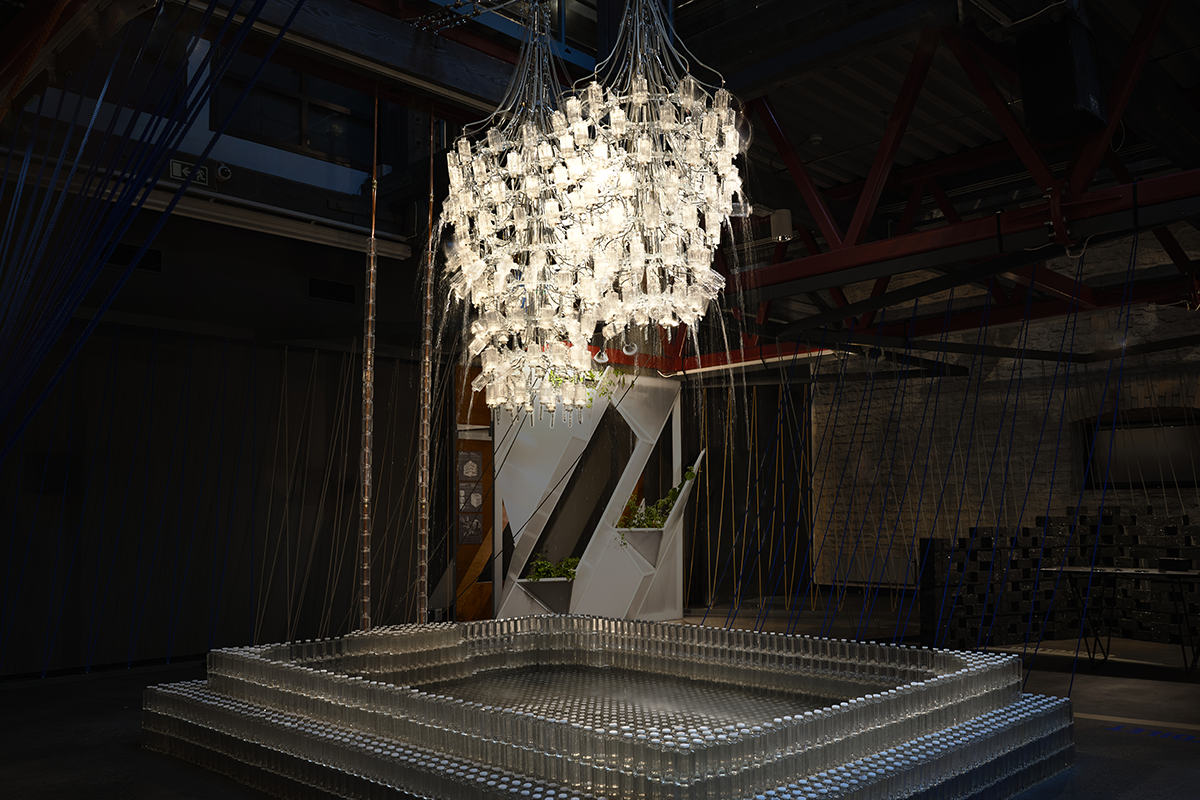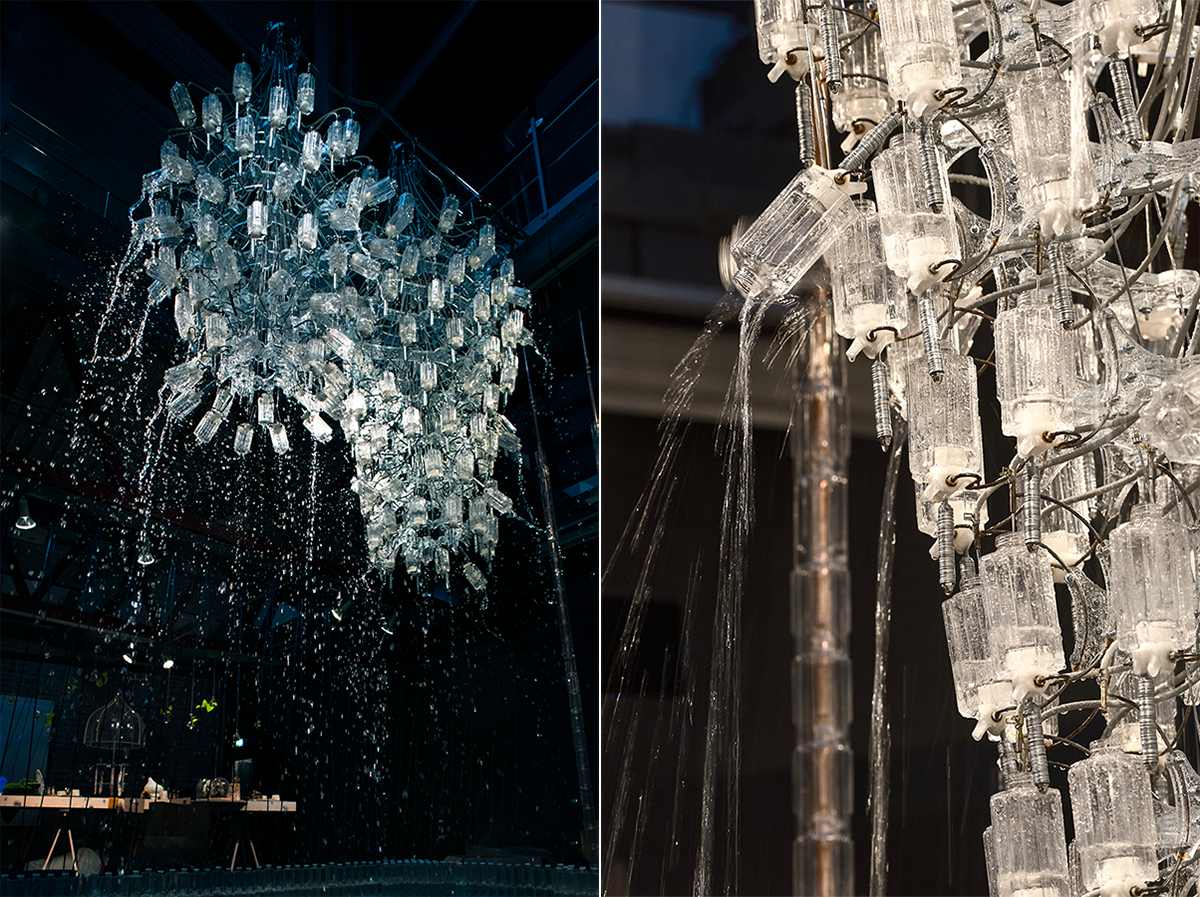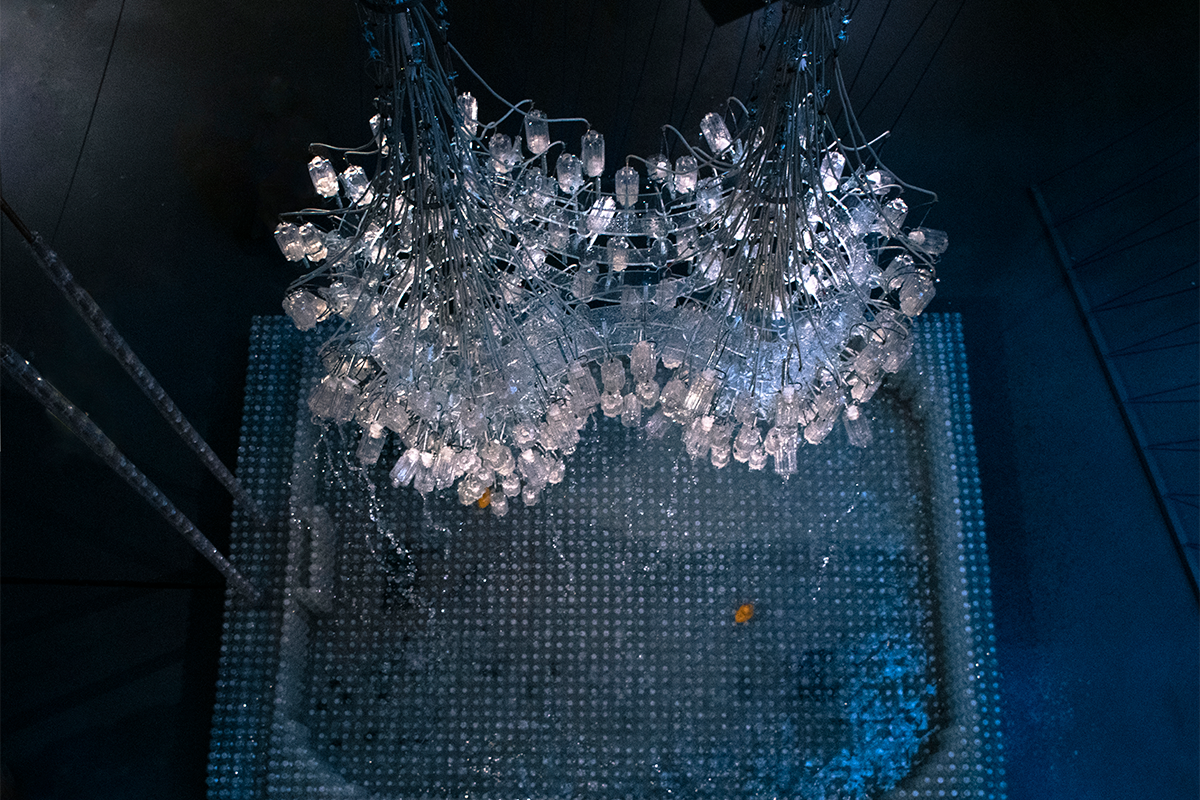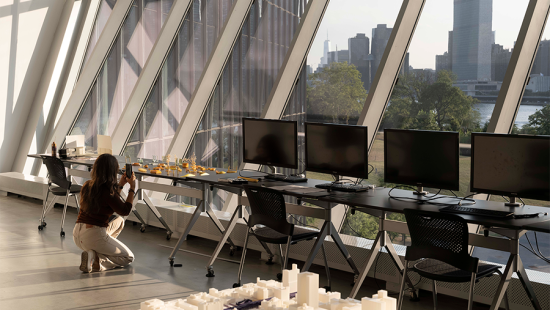AAP's Ecological Action Lab Highlights Plastic and Water Waste with Tallinn Architecture Biennale Sculpture
Friendship WC (Water Chandelier) shines a light on the dual dilemma of global water scarcity and the relentless growth of plastic pollution.
 Friendship WC (Water Chandelier) a project of the Ecological Action Lab, led by Caroline O'Donnell, Associate Professor and Chair of the Department of Architecture at AAP, installed as part of the sixth Tallinn Architecture Biennale. image / Tõnu Tunnel
Friendship WC (Water Chandelier) a project of the Ecological Action Lab, led by Caroline O'Donnell, Associate Professor and Chair of the Department of Architecture at AAP, installed as part of the sixth Tallinn Architecture Biennale. image / Tõnu TunnelUnveiled September 7 at the sixth Tallinn Architecture Biennale, Friendship WC (Water Chandelier) is an architectural exhibit created by the Ecological Action Lab (EAL), led by Caroline O'Donnell, Associate Professor and Chair of the Department of Architecture at Cornell University's College of Architecture, Art, and Planning (AAP).
This year's biennial, titled "Edible; Or, The Architecture of Metabolism," explores architectural strategies of local production, self-sufficiency, and operations that use by-products of urban life, replacing the traditional linear systems of "make, use, and dispose" with circular systems that aim to limit material and resource loss. Embracing that theme, EAL's project is largely built out of Friendship Bottles — plastic containers that have been designed to be reused as construction material — arranged as candles in a chandelier. The bottles release water, rather than light, via a Japanese technique known as sōzu in which the bottles fill with water, tip to release under the power of gravity, and reset to fill again, in an ongoing spectacle of water emission.
 Filled bottles in the Friendship WC (Water Chandelier) tip and release their water. images / Dakota Pace (left) and Tõnu Tunnel (right)
Filled bottles in the Friendship WC (Water Chandelier) tip and release their water. images / Dakota Pace (left) and Tõnu Tunnel (right)The installation's title plays with the term WC (an abbreviation of water closet) replacing the functional form of the toilet with the opulence and excess of a chandelier, whose infinite flow messages both the problem (waste) and the solution (reuse). In some parts of the world, the entire daily ration of water is equivalent to a single flush of perfectly potable water in North American and European toilets.
Due to their interlocking structure, Friendship Bottles can be used as bricks after they have served their function as water containers and have been tested previously for the construction of outdoor dining enclosures and disaster relief shelters at Rensselaer Polytechnic Institute's Center for Architecture, Science, and Technology. For this installation, the EAL's intention was to use the bottles in ways that were unexpected.
"It was important for us not only to consider the second life of the plastic bottle as a building block, but to zoom out and think about the context that might be motivating that transformation," says EAL Director Caroline O'Donnell. "The situation in which these bottles may be available and desirable for use as bricks suggests a concurrent water crisis. This was an opportunity to push beyond questions of plastic waste alone, to consider our wasteful behaviors around other resources, and provoke thoughts of alternative systems of reuse and redesign."
 Aerial view of the Friendship WC (Water Chandelier). image / Dakota Pace
Aerial view of the Friendship WC (Water Chandelier). image / Dakota PaceAccording to the OECD Environmental Outlook, by 2030, almost half the world's population will be living in areas of high water stress, unless new policies are introduced. Already, around 700 million people in 43 countries suffer from water scarcity. In 2019, the global production of plastics reached 368 million metric tons/year, around only 9% of which is recycled.
Visitors to the exhibit are asked to consider two questions. The first, posed by Friendship Products: What if a bottle never ended up in the ocean? And the second, by EAL: What if we didn't flush 40L of water every day?
"The water that we flush is perfectly drinkable," notes project leader Freddo Daneshvaran (M.Arch. '21). "Instead of perpetuating this problem, architects might consider designing systems that reuse greywater, which would not only reduce our freshwater consumption but also reduce the load on sewage systems and the energy used in the distribution and processing of both."
"The chandelier is a mesmerizing spectacle that draws you in," says O'Donnell. "After the first superficial but gratifying snapshot, viewers may invest more time to understand the intricate and dynamic mechanics, and, through that engagement, they may consider the provocation to rethink their own behaviors as global citizens and designers."
Design and Installation: Ecological Action Lab, Cornell University
Project Leader: Freddo Daneshvaran. Team: Kate Heath, Zhisui Ren, and Jiayu Su.
Design Advisors: Iris Xiaoxue Ma, Martin Miller
With: Tim Carlson, Friendship Products
TAB Curated by: Lydia Kallipoliti and Areti Markopoulou
With thanks to Tyler C. Williams, Charles Beach Jr., Nicholas Mino and Kurt Brosnan. Special thanks to Cornell University College of Architecture, Art, and Planning/Department of Architecture, and to Eesti Arhitektuurimuuseum (Estonian Museum of Architecture)
Learn more about the Friendship WC project and the Ecological Action Lab's work.
Stay connected! Follow @cornellaap on Instagram, Facebook, Twitter, and LinkedIn; and subscribe to our AAP bi-weekly newsletter.







